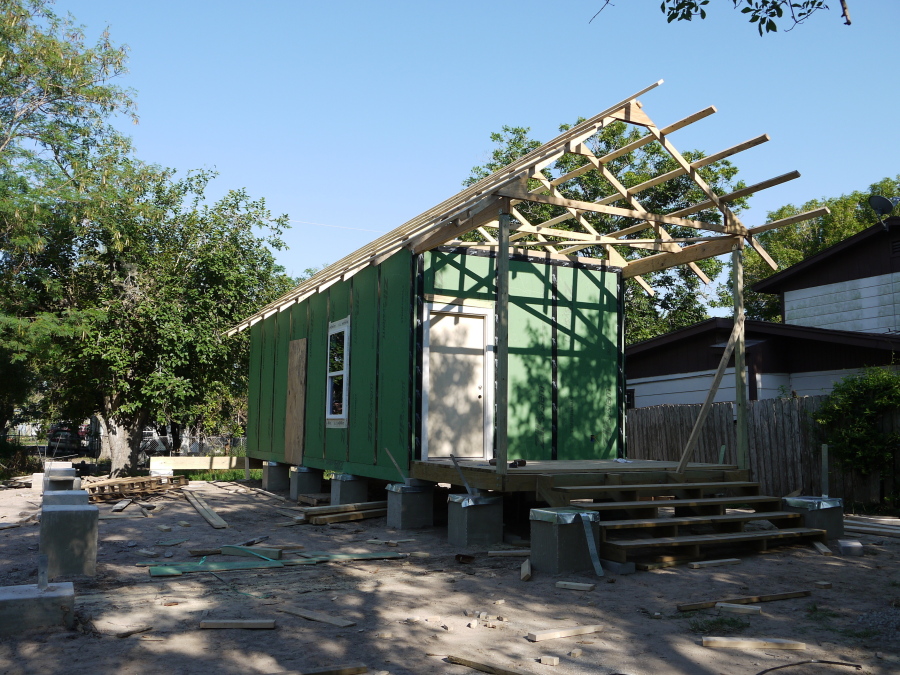NEW YORK — “By the People: Designing a Better America” is not your typical design show. There is no posh furniture, and any glitz comes intertwined with grit. The show is a paean to local ingenuity and “can do” spirit.
These are designs intended to save lives or improve the quality of life for communities in need.
The show, on view at the Cooper Hewitt, Smithsonian Design Museum in New York through Feb. 26, features 60 projects from across the country. Some expand access to education, food, health care and affordable housing. Others increase social and economic inclusion or improve transportation.
The vast exhibit was organized by Cynthia Smith, the museum’s curator of socially responsible design, who logged over 50,000 miles and two years exploring shrinking post-industrial cities, sprawling metropolitan areas, struggling rural towns, and places hit by disasters or poverty, in search of inspiring design.
“I traveled to places of persistent poverty, to Indian reservations. One big takeaway is that poverty is often hidden, but it is all around us,” Smith says. “I hope people going through the exhibit begin to see that the causes of poverty are old and complex, and so the design solutions to various aspects are also complex.”
For instance, the exhibit features Cleveland’s Evergreen Cooperatives, meant to build wealth for low-income residents while reducing the area’s carbon footprint. The cooperatives, which include a green laundry, an alternative-energy enterprise and a hydroponic greenhouse, provide training and jobs, while also serving area hospitals and businesses.
Also in Cleveland, the Collinwood Community Center, on the site of a sprawling former K-mart, has turned a blighted eyesore into a colorful community hub with pools, gyms and other facilities.
Around the country, Smith says, abandoned strip malls are being redesigned as libraries, schools, museums, day care centers and flea markets.
In Texas, the Rapido Rapid Recovery Housing program rethinks the model for large-scale rebuilding after natural disasters. Instead of bringing in temporary mobile homes for displaced families — and later building homes that might not suit their needs — Rapido quickly deploys 400-square-foot “core” housing units containing a living space, kitchen, bathroom and bedroom on a family’s property. While the disaster-relief application gets underway, architects and contractors work with families to expand and customize the unit. This allows families to live on their own property — and in their own home — during reconstruction, and quickly find themselves with a completed house that they helped design.
The show also includes futuristic, fuel-efficient commuter vehicles made of aluminum and steel, with tiny moped motors. The vehicles were created by a Michigan design team called “The Future People” to get people around cities and suburbs at minimal cost, with room for groceries or other supplies.
In farming communities across the United States and in Canada and Britain, a coalition of makers, engineers and farmers builds “Farm Hack Tools,” including pedal-powered tractors with features like customizable, 3D-printed seeder wheels.
The show begins with a section on design solutions to improve interactions between police officers and the communities they serve. In Chicago, for instance, a basketball court was built on a vacant lot attached to a police station. As the exhibit continues up a side staircase, charts show housing costs and the salaries required to afford them in various parts of New York City.
In the museum’s Process Lab, visitors of all ages can try their own design solutions to different community challenges.
Organized by theme — Act, Save, Share, Live, Learn and Make — the show is the third in a series on socially responsible design, but the first of the series to focus on communities in the United States. The exhibit will not travel beyond New York, but its hefty catalog, featuring details about each project and interviews with the designers, is online at https://collection.cooperhewitt.org/exhibitions/404735407/.



